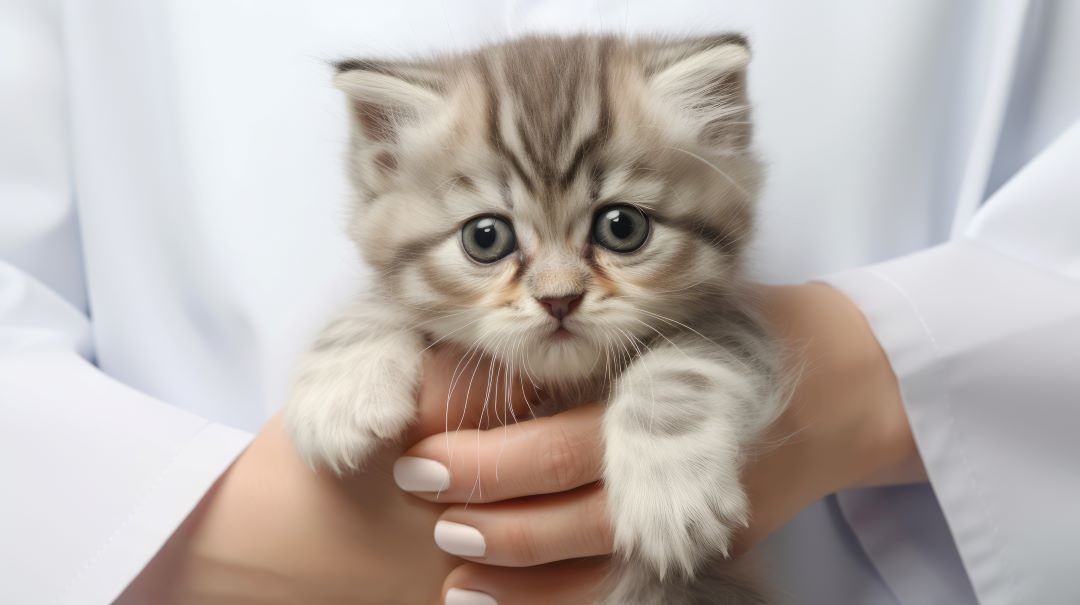Don't Ignore Feline Kidney Disease Warnings: Frequent Urination and Increased Thirst!
Has your cat recently experienced symptoms such as frequent urination and thirst? They could be signs of kidney disease in cats. Statistics show that kidney failure is one of the leading causes of death in domestic cats. The symptoms may not be obvious at first, making it difficult for owners to detect until the disease has progressed to a later stage. This article will provide a detailed overview of the causes and symptoms of kidney disease in cats, helping owners to detect and effectively manage it early. Don't miss out on this article if you're a cat lover!

Causes of Kidney Disease in Cats
There are many high-risk factors that can cause kidney disease in cats, including hypertension, infections (such as Periodontitis), use of nephrotoxic drugs, inadequate water intake over a long period of time, genetics, and breed (such as Maine Coon, Abyssinian, Siamese, Russian Blue, etc.), and vaccination. The causes of kidney disease can be divided into three main categories: prerenal, intrinsic renal, and postrenal.Prerenal causes: Reduced blood flow to the kidneys due to low blood pressure, heart disease, or other factors can impair kidney function and hinder waste metabolism.
Intrinsic renal causes: Acute kidney failure caused by damage to the kidney tissue itself, usually due to tumors, blood clots, or surgery.
Postrenal causes: Acute kidney failure caused by urinary tract obstruction, urethral blockage, or kidney obstruction
Clinical Symptoms of Kidney Disease in Cats
The clinical symptoms of feline kidney disease include increased water intake and urination, decreased activity level, frequent vomiting, weight loss, decreased appetite, and dehydration. If owners notice these symptoms in their cats, they should seek veterinary care promptly for diagnosis and treatment.IRIS Staging of Feline Chronic Kidney Disease
Familiarity with the stages of chronic kidney disease in cats defined by the International Renal Interest Society (IRIS) can aid pet owners in accurately assessing the severity of their cat's kidney disease.
01.jpg)
- Stage 1: Renal Insufficiency (Early Stage)
- Blood test values: Creatinine less than 1.6 mg/dL, SDMA less than18 μg/dL
- Common treatment approaches: Encourage increased water intake and feed them food with higher moisture content.
- Stage 2: Renal Insufficiency (Advanced Stage)
- Blood test values: Creatinine between 1.6-2.8 mg/dL, SDMA: 18-25 μg/dL
- Common treatment approaches: Renal therapeutic diet, medications to control symptoms
- Stage 3: Kidney Failure (Early Stage)
- Blood test values: Creatinine: 2.8-5.0 mg/dL, SDMA: 26-38 μg/dL
- Common treatment approaches: Renal therapeutic diet, subcutaneous fluids, and medications to control symptoms such as high blood pressure and proteinuria.
- Stage 4: Kidney Failure (Advanced Stage)
The focus of treatment at this stage is on maintaining the cat's quality of life and managing its symptoms with appropriate medication. Unlike earlier stages, the emphasis is no longer on slowing down the progression of the disease. Owners should carefully consider whether to use appetite stimulants or feeding tubes to provide their cats with the necessary nutrition and medication to help them through this challenging period.
- Blood test values: Creatinine: >5.0 mg/dL, SDMA: >38 μg/dL
- Common treatment approaches: Encouraging increased water intake, renal therapeutic diet, subcutaneous fluids, symptom-specific medications, appetite stimulants, or feeding tubes as needed.

Sarcopenia in Aging Dogs and Cats: Hidden Risks of Muscle and Joint Degeneration and Strategies for Care!What Is Sarcopenia? It’s More Than Just “Getting Thinner!
As dogs and cats grow older, many pet owners notice reduced activity levels and apparent weight loss. While these changes are often dismissed as normal signs of aging, they may actually indicate a more serious condition — sarcopenia. Sarcopenia is the gradual loss of muscle mass and strength caused by aging or chronic illness. Unlike general weight loss, which may involve fat or overall body mass, sarcopenia specifically targets muscle tissue. This means that even if a pet’s body weight appears stable, they could still be experiencing significant muscle loss.

The Complete Guide to Spaying and Neutering Your Pets: Surgery, Operative Care and Long-Term Health
Do cats and dogs really need to be spayed or neutered?” It’s one of the most frequent questions pet owners ask. Spay and neuter procedures go far beyond birth control—they are closely tied to better behavior, longer lifespans, and overall well-being. But surgery is only the first step. Lasting health depends on attentive post-operative care and the right nutritional support. Without it, pets may face higher risks of metabolic imbalances and chronic conditions. In this article, we’ll cover why and when spaying or neutering is truly necessary, how to prepare before and after surgery, a complete guide to operative care, and the common causes of slowed metabolism after the procedure—along with practical nutrition tips to help your furry companions stay healthy for years to come.







